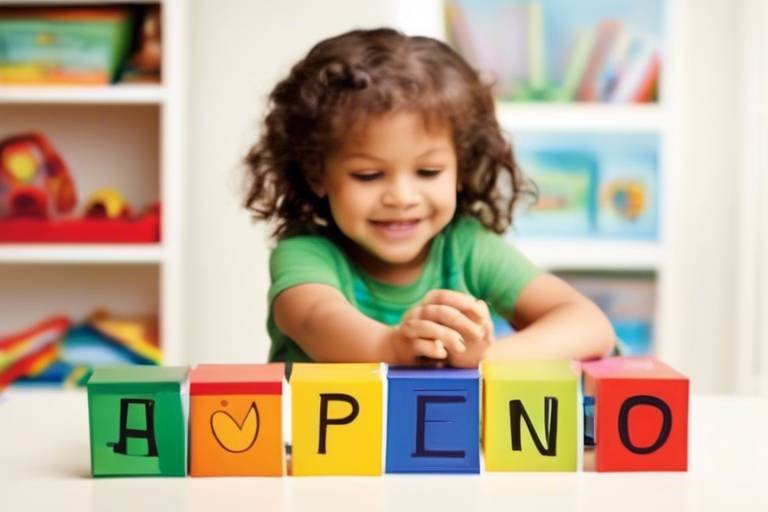Encouraging Independence In Preschoolers: Tips And Tricks
Independence is like a beautiful seed that, when nurtured, can grow into a strong and confident tree. In the world of preschoolers, fostering independence isn’t just about allowing them to do things on their own; it’s about building a foundation for their emotional and social growth. Imagine a little bird learning to fly. At first, it flutters and struggles, but with each attempt, it gains strength and confidence. That’s what encouraging independence is all about! By giving preschoolers the tools they need to explore, make choices, and solve problems, we are setting them up for success in the big, wide world.
So, why is independence in preschoolers so critical? Well, when children learn to do things by themselves, they not only develop essential life skills but also build their self-esteem. Think of it as giving them a toolbox filled with various tools they can use as they navigate through life. Each time they successfully complete a task or make a decision, they add another tool to their collection. This sense of autonomy allows them to feel more in control, which is incredibly empowering. Furthermore, children who are encouraged to be independent often develop better social skills, as they learn to interact with others and express their needs and desires effectively.
Creating a nurturing environment is like setting the stage for a grand play. It’s essential to design spaces that encourage exploration while ensuring safety and comfort. Imagine a cozy reading nook filled with colorful cushions and books at eye level. This setup invites children to dive into the world of stories independently. When children feel safe and comfortable, they are more likely to take risks and explore their surroundings. A supportive environment can include:
- Child-sized furniture to promote comfort and accessibility.
- Open spaces for movement and exploration.
- Organized play areas that allow for self-directed activities.
A well-organized play area is like a treasure chest waiting to be discovered. When toys and materials are arranged thoughtfully, children can easily choose activities that interest them. Consider using clear bins for toys, labeling them with pictures and words. This not only makes it easier for preschoolers to find what they want but also teaches them about organization and responsibility. Imagine walking into a playroom where everything is in its place – it’s inviting and encourages children to engage in self-directed play!
Providing choices is a powerful way to empower preschoolers. When children are given options, whether it’s choosing between two activities or selecting what to wear, they start to understand the concept of decision-making. This can be as simple as asking, “Would you like to play with blocks or paint?” By allowing them to make choices, we’re fostering their confidence and helping them realize that their opinions matter.
Assigning age-appropriate responsibilities can work wonders in fostering a sense of ownership. Simple chores like putting away toys, helping set the table, or sorting laundry can give preschoolers a sense of accomplishment. It’s like giving them a badge of honor for their efforts! When they complete these tasks, celebrate their success. This acknowledgment reinforces their capabilities and motivates them to take on more responsibilities.
Encouraging preschoolers to solve problems independently is akin to teaching them how to navigate a maze. Instead of swooping in to provide solutions, guide them through the process of finding their own answers. Ask open-ended questions like, “What do you think we should do next?” This approach builds resilience and critical thinking skills. Over time, they’ll learn to tackle challenges with confidence, turning obstacles into opportunities for growth.
Children are like sponges, soaking up everything around them, especially the actions and attitudes of adults. By modeling independent behavior ourselves, we’re providing a living example for preschoolers to emulate. Whether it’s tackling a household task or making a decision, our actions speak volumes. When they see us handling challenges with confidence, they’re more likely to adopt that same mindset.
Sharing stories of our own challenges and triumphs can serve as powerful motivation for preschoolers. When we recount how we overcame a difficulty, it not only humanizes us but also inspires them to tackle their own hurdles. For example, telling them about a time you learned to ride a bike after several falls can encourage them to persist in their own endeavors. It’s about creating a narrative that emphasizes resilience and determination.
Exploration is the heartbeat of learning. Providing opportunities for preschoolers to explore their environments fosters curiosity and independence. Plan activities that allow them to interact with nature, engage in imaginative play, or experiment with new materials. Think of it as opening a door to a world of discovery, where every corner holds a new adventure waiting to unfold!
Recognizing and celebrating milestones is crucial in boosting a child’s confidence. Whether it’s a small victory like tying their shoes or a bigger accomplishment like completing a puzzle, acknowledging these moments reinforces their self-esteem. Consider creating a “Celebration Wall” where you can display their achievements. This visual representation of their successes serves as a constant reminder of what they can accomplish when they embrace independence.
Q1: How can I encourage my child to be more independent?
A1: Start by providing choices in daily activities and gradually assign age-appropriate responsibilities. Celebrate their successes to boost their confidence!
Q2: What are some age-appropriate chores for preschoolers?
A2: Simple tasks like putting away toys, helping with laundry, or setting the table are great ways to promote responsibility.
Q3: How can I model independence for my child?
A3: Share your experiences and demonstrate problem-solving skills in everyday situations. Let them see you tackle challenges confidently!
Q4: Why is independence important for preschoolers?
A4: Independence fosters self-esteem, decision-making skills, and resilience, all of which are essential for emotional and social growth.

Understanding Independence in Early Childhood
Independence in preschoolers is not just a buzzword; it’s a vital aspect of their growth and development. When we talk about fostering independence, we’re diving into a world where children learn to navigate their surroundings, make choices, and develop a sense of self. This journey of autonomy begins in early childhood and sets the stage for emotional and social growth. Think of it like planting a seed; with the right nurturing, it can blossom into a strong, resilient tree.
Why is independence so crucial during these formative years? Well, it empowers children to explore their environment without constant supervision, which is essential for developing problem-solving skills and self-confidence. When preschoolers are encouraged to try things on their own, they learn to trust their instincts and abilities. This not only enhances their decision-making skills but also fosters a sense of accomplishment when they succeed. It’s like giving them a treasure map; every small victory leads them closer to discovering their potential.
Moreover, fostering independence helps children develop essential life skills. From learning to dress themselves to managing simple tasks, each step they take towards self-sufficiency builds their confidence. As they face challenges, they gain resilience, learning that it’s okay to make mistakes along the way. In fact, mistakes are often the best teachers! By allowing preschoolers to experience this journey, we’re equipping them with the tools they need to navigate the world around them.
To illustrate the impact of independence on emotional and social growth, consider the following points:
- Emotional Development: Children who are encouraged to be independent tend to exhibit higher self-esteem and better emotional regulation. They learn to express their feelings and cope with frustrations effectively.
- Social Skills: Independence fosters social interactions. When children engage in self-directed play, they learn to negotiate, share, and collaborate with their peers, enhancing their social competence.
- Decision-Making: Making choices, whether big or small, teaches children the consequences of their actions. This foundational skill is critical as they grow and face more complex decisions.
In summary, understanding independence in early childhood is about recognizing its profound impact on a child's overall development. It’s a journey filled with exploration, learning, and growth. By nurturing this independence, we are not just helping preschoolers become self-reliant; we are also preparing them for a future where they can confidently face the world, equipped with the skills and resilience they need to thrive.

Creating a Supportive Environment
Creating a supportive environment for preschoolers is like building a sturdy foundation for a house; it sets the stage for everything that comes after. A nurturing space not only fosters independence but also allows children to explore their surroundings freely. Imagine a world where every corner of a room invites curiosity and every toy encourages self-sufficiency. This is the essence of a supportive environment, where safety and comfort are paramount. By crafting spaces that promote exploration, we empower our little ones to take charge of their own learning experiences.
One vital aspect of a supportive environment is ensuring that everything is within reach for preschoolers. When children can access their toys, books, and art supplies independently, they feel a sense of ownership over their playtime. Think about it: how often do adults get frustrated when they can't find what they need? Preschoolers experience similar feelings, so providing them with organized spaces where they can easily locate items is essential. For instance, consider using low shelves for books and clearly labeled bins for toys. This not only encourages them to tidy up after themselves but also makes them more likely to engage in self-directed play. After all, who wouldn't want to dive into a treasure trove of colorful blocks or soft plush toys?
Another key element is to incorporate areas designated for specific activities. Having a reading nook, an art corner, and a play zone can help children understand that different spaces serve different purposes. This organization not only makes it easier for them to choose what they want to do but also instills a sense of routine. For example, when a child knows that the art corner is for creativity, they can feel confident in making that choice without needing adult intervention. The goal is to create an environment where children can thrive independently while still feeling secure and supported.
Safety is, of course, a non-negotiable aspect of any supportive environment. Parents and caregivers must ensure that the spaces are free from hazards and that all materials are age-appropriate. This means regularly checking toys for small parts that could pose a choking hazard or ensuring that play equipment is sturdy and safe. When children feel secure in their environment, they are more likely to take risks, explore new activities, and ultimately develop independence.
Moreover, it's essential to foster a sense of community within the environment. Encourage interactions among children by arranging playdates or group activities that promote teamwork and collaboration. When preschoolers work together, they learn valuable social skills while also feeling supported by their peers. This sense of belonging can significantly enhance their confidence as they navigate the world around them.
In summary, creating a supportive environment for preschoolers involves thoughtful organization, safety, and opportunities for social interaction. By providing spaces that encourage exploration and independence, we lay the groundwork for their emotional and social development. Remember, a well-crafted environment is like an open invitation for children to step out of their comfort zones and discover the world on their own terms.

Organizing Play Areas
Creating a vibrant and well-organized play area is essential for fostering independence in preschoolers. Think of the play area as a canvas where children can express themselves, explore their interests, and develop critical skills. When toys and materials are arranged thoughtfully, it encourages kids to take charge of their playtime, allowing them to choose activities that resonate with them. Imagine walking into a room where everything is within reach, neatly categorized, and visually appealing—this setup not only invites exploration but also sparks creativity!
To achieve this, consider dividing the play area into specific zones, each dedicated to different types of play. For instance, you might have a reading nook, an arts and crafts station, and a block-building area. This organization helps children understand where to find what they need, making it easier for them to engage independently. Additionally, using clear bins or labels can assist in teaching them how to put things away after they're done playing, reinforcing both independence and responsibility.
Moreover, it's important to rotate toys and materials regularly. This keeps the play area fresh and exciting, encouraging children to explore new activities. For example, you could change the art supplies every few weeks or introduce new books to the reading nook. Children thrive on novelty, and by keeping things dynamic, you foster a sense of curiosity that propels them to discover more on their own.
Here are a few tips to keep in mind while organizing play areas:
- Accessibility: Ensure that toys are within reach so children can freely choose what they want to play with.
- Variety: Offer a mix of activities that cater to different interests—some children may prefer building, while others might enjoy imaginative play.
- Safety: Always prioritize safety by removing any hazardous materials and ensuring that the play area is free of sharp edges or choking hazards.
By thoughtfully organizing play areas, you not only create a stimulating environment but also empower preschoolers to become more self-sufficient. They learn to make choices, solve problems, and take responsibility for their play, all of which are crucial steps in their journey toward independence. So, the next time you walk into a play space, ask yourself: is it inviting enough to inspire exploration and creativity? If not, it might be time to shake things up!

Incorporating Choice
Providing choices is a powerful tool in nurturing independence among preschoolers. When children are given the opportunity to make decisions, they not only feel more in control but also develop critical thinking skills. Imagine walking into a vibrant classroom where children are engaged in various activities, each one choosing what captivates their interest. This scenario is not just a dream; it can be a reality with the right approach to incorporating choice into daily routines.
Start by offering simple choices that are manageable for preschoolers. For instance, during snack time, instead of simply handing them a snack, ask, “Would you like an apple or a banana?” This small act empowers them, making them feel valued and respected. It’s essential to keep the options limited to avoid overwhelming them. You might say, “Would you like to play with blocks or paint?” This not only encourages decision-making but also allows children to express their preferences, which is a crucial aspect of their emotional development.
Moreover, incorporating choice can extend beyond playtime. In daily tasks, you can involve preschoolers in decisions that affect their routine. For example, let them choose their clothes for the day from a selection you've prepared. This simple act can boost their confidence and instill a sense of responsibility. You could create a small chart that lists out the choices available for the week, allowing them to see their options visually. This can help them understand the concept of planning and anticipation.
When integrating choice into your preschoolers’ lives, remember to celebrate their decisions, regardless of the outcome. If they choose to wear mismatched socks or opt for a snack that isn’t the healthiest, use it as a learning opportunity rather than a moment of correction. You might say, “I see you chose those socks! They’re very colorful! How do you feel wearing them?” This approach not only validates their choice but also encourages them to reflect on their decisions.
Ultimately, incorporating choice in a preschooler's life is about balance. It’s essential to provide options that are safe and appropriate while also allowing room for creativity and self-expression. The goal is to create an environment where children feel confident to explore their preferences and make decisions that reflect their individuality. As they navigate these choices, they are not just learning about preferences; they are building the foundation for self-reliance that will serve them well into adulthood.

Encouraging Responsibility
Encouraging responsibility in preschoolers is not just about assigning chores; it’s about instilling a sense of ownership and accountability that will serve them throughout their lives. When children feel responsible, they begin to recognize their role in the world around them, which is an essential part of growing up. Think of it like planting a seed; with the right care and attention, that seed will grow into a strong tree, capable of withstanding storms and providing shade. In this case, the seed is their sense of responsibility, and the nurturing comes from us—parents and educators.
One effective way to encourage responsibility is by introducing age-appropriate tasks that they can manage. For instance, simple chores like putting away toys, helping to set the table, or sorting laundry can make a big difference. These tasks not only teach them how to contribute but also help them develop essential life skills. When children successfully complete these tasks, they experience a sense of accomplishment that boosts their confidence and reinforces their ability to handle responsibilities in the future.
Moreover, it’s crucial to provide opportunities for children to make choices in their daily routines. For example, you might ask them to choose between two outfits or decide which snack to have. This practice encourages decision-making skills and helps them understand the consequences of their choices. Just like a captain steering a ship, preschoolers learn to navigate their own course, and with every decision they make, they gain confidence in their ability to manage their lives.
To further support this journey, consider creating a responsibility chart. This chart can visually represent their tasks and achievements. For example, you could include a simple table that outlines daily responsibilities:
| Task | Frequency | Completed |
|---|---|---|
| Put away toys | Daily | ☐ |
| Help set the table | Daily | ☐ |
| Sort laundry | Weekly | ☐ |
As children complete their tasks, they can check them off, providing a visual representation of their accomplishments. This not only reinforces their sense of responsibility but also makes it a fun and engaging process. It’s like turning responsibility into a game, where they are the champions of their own progress!
Lastly, remember to celebrate their efforts, no matter how small. A simple “Great job!” or a sticker reward can go a long way in motivating them. Just as a coach cheers for their team, your encouragement will inspire them to take on more responsibilities. So, let’s nurture that sense of accountability in our preschoolers, helping them grow into confident, responsible individuals who are ready to take on the world!
- What are some age-appropriate responsibilities for preschoolers?
Tasks like putting away toys, dressing themselves, or helping with simple household chores are great starting points. - How can I encourage my child to take responsibility without overwhelming them?
Start small with one or two tasks and gradually increase responsibilities as they become more comfortable. - What if my child resists taking on responsibilities?
Make it fun by turning tasks into games or rewarding them for their efforts to encourage participation.

Promoting Problem-Solving Skills
Encouraging preschoolers to become adept problem solvers is like giving them a treasure map to navigate the world around them. It's essential to create an environment where they feel safe to tackle challenges head-on, fostering resilience and creativity. Think of it this way: when kids face a problem, it's like a puzzle waiting to be solved. Instead of jumping in to provide the answer, we can guide them gently, allowing them to explore different solutions. This not only helps them develop critical thinking skills but also boosts their confidence as they figure things out on their own.
One effective strategy is to present them with open-ended questions that spark their curiosity and encourage them to think critically. For instance, instead of asking, “Do you want to play with blocks?” you might say, “What can we build with these blocks?” This subtle shift invites them to engage their imagination and problem-solving skills. You can also set up scenarios where they need to think through a solution. For example, if a toy is stuck under a couch, instead of retrieving it for them, ask, “How do you think we can get it out?” This prompts them to brainstorm and come up with ideas, whether it’s using a stick or asking for help.
Moreover, it’s important to recognize that mistakes are part of the learning process. When children encounter obstacles, they should understand that it’s perfectly okay to stumble. Encourage them to reflect on what went wrong and how they can approach the problem differently next time. This not only builds resilience but also instills a growth mindset, teaching them that effort and persistence can lead to success.
Here are some practical activities that can promote problem-solving skills in preschoolers:
- Building Challenges: Provide various materials like blocks, cardboard, or even recycled items and challenge them to create something specific, like a bridge or a tower.
- Puzzles and Games: Engaging them in puzzles or strategy games can enhance their critical thinking and decision-making skills.
- Story Problems: Create simple stories with problems that need solving. Ask them how they would resolve the issue.
By integrating these activities into their daily routine, we can nurture their problem-solving abilities and equip them with essential skills for the future. Remember, the goal is not just to arrive at the right answer but to enjoy the journey of discovery along the way!

Modeling Independence
Children are like sponges, soaking up everything around them, especially from the adults they look up to. This is why is such a powerful tool in helping preschoolers develop their own sense of self-reliance. When we show them how to tackle tasks on their own, whether it's tying their shoes or making a simple snack, we’re not just teaching them skills; we’re giving them a glimpse into the world of possibilities. Imagine a child watching their parent confidently handle a challenge. That moment can ignite a spark of curiosity and motivation. They think, “If they can do it, so can I!”
But how do we effectively model independence? It’s all about demonstrating behaviors that encourage self-sufficiency. For instance, when you face a small obstacle, narrate your thought process out loud. Say something like, “Hmm, I need to find my keys. Let’s see where I left them last.” This not only shows them how to approach problem-solving but also reinforces the idea that it’s okay to struggle a bit before finding a solution. It’s a wonderful way to teach resilience without directly telling them what to do.
Additionally, sharing personal experiences can be an excellent way to inspire preschoolers. Think back to a time when you faced a challenge. Maybe it was learning a new recipe or fixing something around the house. By recounting the story of how you persevered, you give children a relatable example of overcoming difficulties. This can motivate them to tackle their own challenges. For instance, you might say, “When I was learning to ride a bike, I fell a few times, but I kept getting back on. It was hard, but I felt so proud when I finally rode without falling!”
Moreover, encouraging exploration is vital. Children are naturally curious, and when we allow them to explore their surroundings, we’re giving them the freedom to learn and grow independently. Set up activities that promote this curiosity—like a treasure hunt around the house or a nature walk where they can collect interesting leaves or rocks. Each new discovery reinforces their ability to navigate the world on their own.
In summary, modeling independence isn’t just about showing children how to do things; it's about creating an environment where they feel empowered to try things themselves. By openly sharing our experiences, encouraging problem-solving, and fostering exploration, we can help preschoolers build the confidence they need to become independent individuals. Remember, every small victory they achieve is a stepping stone toward greater self-reliance!
- Why is modeling independence important for preschoolers?
Modeling independence helps preschoolers learn essential life skills, boosts their confidence, and fosters resilience. When they see adults tackling challenges, they are inspired to emulate that behavior.
- How can I encourage my child to solve problems independently?
Encourage your child to think through challenges by asking guiding questions rather than providing immediate solutions. This helps them develop critical thinking skills.
- What are some age-appropriate responsibilities for preschoolers?
Simple chores like picking up toys, helping with meal prep, or sorting laundry can instill a sense of responsibility and ownership in preschoolers.
- How can I celebrate my child's independent achievements?
Recognize their efforts with praise, stickers, or small rewards. Celebrating milestones reinforces their confidence and encourages them to continue striving for independence.

Sharing Personal Experiences
When it comes to fostering independence in preschoolers, one of the most powerful tools we have at our disposal is the art of storytelling. Sharing personal experiences not only allows children to see the world through our eyes but also helps them understand that challenges are a normal part of life. Imagine telling a child about a time when you faced a tough situation—maybe you struggled to learn how to ride a bike or felt nervous about your first day at school. By sharing these stories, you create a bridge of connection that shows them they are not alone in their struggles.
It's essential to frame these stories in a way that highlights the **lessons learned** and the **emotions felt** during those moments. For instance, you might say, "I remember when I was learning to ride my bike, I fell a few times and felt really frustrated. But each time I got back up, I learned something new about balancing and steering. Eventually, I could ride without any help!" This kind of narrative not only makes the experience relatable but also emphasizes the importance of perseverance, encouraging children to tackle their own challenges.
Moreover, consider using a variety of storytelling methods to keep them engaged. You can:
- Use **pictures or drawings** to illustrate your stories.
- Incorporate **role-playing** where they can act out scenarios similar to your experiences.
- Encourage them to **share their own stories**, creating a two-way street of communication.
By allowing preschoolers to express their feelings and thoughts about their own experiences, you empower them to articulate their challenges and triumphs. This not only builds their confidence but also reinforces the idea that independence is a journey filled with ups and downs. Remember, the goal is to make them feel that they can overcome obstacles just as you did. In doing so, you cultivate a sense of resilience and self-reliance that will serve them well throughout life.
In conclusion, sharing personal experiences is a vital strategy in promoting independence among preschoolers. It transforms abstract concepts of resilience and problem-solving into tangible lessons that children can grasp. So, the next time you face a challenge, consider how your story might inspire a young mind to tackle their own adventures!

Encouraging Exploration
Encouraging exploration in preschoolers is like opening a treasure chest filled with endless possibilities. When children are given the freedom to explore, they not only discover the world around them but also learn about themselves. It's essential to create an atmosphere where curiosity is celebrated and exploration is encouraged. Imagine a world where every corner of the house or yard holds a new adventure just waiting to be uncovered!
One of the best ways to promote exploration is by providing a variety of materials and experiences. Think of it as creating a buffet of opportunities for your little ones. This could include:
- Nature Walks: Take your preschoolers on a nature walk where they can collect leaves, rocks, or flowers. Encourage them to ask questions about what they find.
- Art Supplies: Stock up on different art materials, such as crayons, paints, and clay, allowing children to express their creativity in unique ways.
- Books and Storytelling: Introduce them to books that spark their imagination. Storytelling can ignite their desire to explore new worlds and ideas.
Additionally, you can set up exploration stations at home. These are designated areas filled with various activities that allow children to engage in hands-on learning. For example, a science station could include magnifying glasses and simple experiments, while a construction zone might have blocks and building materials. By rotating the activities regularly, you keep their interest piqued and their minds active.
Another fantastic way to encourage exploration is through open-ended questions. Instead of simply asking, "What do you see?" try asking, "How do you think this works?" or "What happens if we mix these colors?" These types of questions invite children to think critically and engage with their environment in a deeper way. Remember, the goal is to foster a sense of wonder and excitement about learning!
Lastly, don’t forget the power of play. Play is the natural language of preschoolers, and it’s through play that they often explore complex ideas and concepts. Whether it’s pretending to be a pirate searching for treasure or a scientist conducting experiments, imaginative play allows children to explore their interests and develop their problem-solving skills. So, let your kids lead the way, and watch as they embark on their own thrilling adventures!
Q: How can I create a safe exploration environment for my preschooler?
A: Ensure that the areas they explore are child-proofed and free from hazards. Use soft materials for play areas and supervise them during outdoor activities to keep them safe.
Q: What types of activities are best for promoting exploration?
A: Activities that involve sensory experiences, such as playing with sand, water, or different textures, can be very effective. Additionally, outdoor activities like gardening or visiting parks can enhance their exploratory skills.
Q: How can I encourage my child if they seem hesitant to explore?
A: Start small by exploring familiar environments together. Gradually introduce new settings and activities, providing plenty of encouragement and praise to build their confidence.

Celebrating Achievements
Celebrating achievements, no matter how small, is a vital part of fostering independence in preschoolers. When children accomplish tasks on their own, it’s essential to recognize these moments, as they significantly boost their confidence and motivation. Think of it as planting seeds of self-esteem that will grow over time. Just like a garden needs sunlight and water, children need praise and acknowledgment to flourish. So, how can we effectively celebrate their achievements?
One of the simplest yet most impactful ways to celebrate is through verbal recognition. A heartfelt “Wow, you did it!” or “I’m so proud of you!” can make a world of difference. This kind of positive reinforcement not only makes children feel good about themselves but also encourages them to take on new challenges. Additionally, consider creating a celebration chart where children can see their accomplishments visually. This chart can include stickers or drawings representing each achievement, serving as a constant reminder of their capabilities.
Moreover, involving the family in celebrating achievements can amplify the joy. For instance, you can organize a small family gathering where the child is the star of the show. This could be as simple as sharing a special meal or having a fun activity that the child enjoys. The key is to make them feel special and celebrated, reinforcing their sense of accomplishment. You might even consider creating a “Celebration Day” each month, where everyone shares their proud moments, making it a fun tradition!
In addition to verbal praise and family celebrations, consider crafting a “Wall of Fame” in your home. This can be a dedicated space where you display the child’s artwork, certificates, or any little mementos that signify their achievements. This not only decorates your home but also serves as a daily reminder for the child of their successes. They can walk by and see their accomplishments, which can inspire them to strive for more!
Lastly, remember that celebrating achievements doesn’t always have to be grand. Sometimes, the simplest gestures can mean the most. A warm hug, a high-five, or even a simple note saying “You are amazing!” can have a lasting impact. It’s all about making them feel valued and recognized for their efforts. In this way, you’re not just celebrating the achievements but also nurturing a lifelong love for learning and independence.
- Why is it important to celebrate small achievements in preschoolers?
Celebrating small achievements helps build a child’s self-esteem and encourages them to take on new challenges, fostering a sense of independence. - What are some creative ways to celebrate a child's achievements?
Consider creating a celebration chart, organizing family gatherings, or setting up a Wall of Fame to showcase their accomplishments. - How can I ensure my child feels special during celebrations?
Involve them in the planning, use personal touches like favorite foods or activities, and give heartfelt praise to make them feel valued.
Frequently Asked Questions
- Why is fostering independence important for preschoolers?
Fostering independence in preschoolers is crucial because it helps them develop essential life skills. When children learn to make choices and solve problems on their own, they build confidence and self-reliance. This independence not only boosts their emotional growth but also enhances their social skills as they interact with peers.
- How can I create a supportive environment for my child?
Creating a supportive environment involves organizing play areas and ensuring safety while allowing exploration. Set up spaces where children can easily access toys and materials, encouraging them to engage in self-directed play. A nurturing atmosphere empowers them to try new things without fear of failure.
- What are some age-appropriate responsibilities I can assign?
Age-appropriate responsibilities can include simple chores like putting away toys, helping with meal prep, or dressing themselves. These tasks help preschoolers feel capable and instill a sense of ownership. Start small and gradually increase responsibilities as they grow more confident.
- How can I promote problem-solving skills in my child?
To promote problem-solving skills, encourage your child to tackle challenges independently. Instead of providing immediate solutions, guide them with questions that lead them to think critically. This approach builds resilience and helps them learn that it's okay to struggle before finding a solution.
- What role does modeling independence play in a child's development?
Modeling independence is vital because children learn by observing adults. When you demonstrate self-reliance and share your experiences of overcoming challenges, it inspires preschoolers to emulate that behavior. Your actions speak louder than words, and they’ll be more likely to develop similar habits.
- How can I celebrate my child's achievements?
Celebrating your child's achievements, no matter how small, is essential for boosting their confidence. You can acknowledge their efforts with verbal praise, stickers, or even a special treat. This recognition reinforces their motivation to continue striving for independence and tackling new challenges.



















